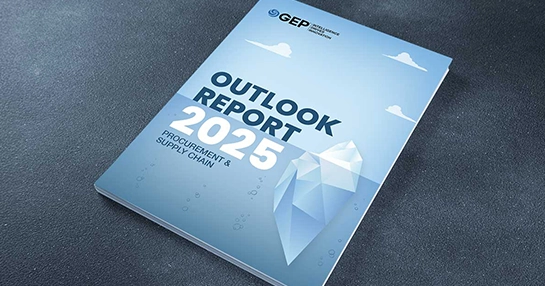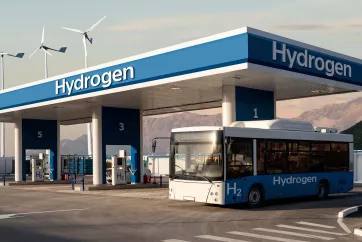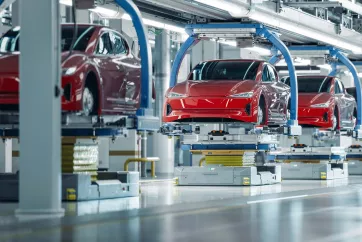
Struggling to Measure Your Business’ ESG Impact? Start with Sustainability Assessment
- Sustainability assessment is a comprehensive evaluation that helps businesses understand the ESG impact of their operations.
- This requires procurement to monitor emissions, carbon footprint, energy consumption and other ESG metrics.
- Procurement must leverage advanced technology and tools for a quick and accurate assessment.
March 12, 2025 | Sustainability
Regulatory pressure has increased. Investors are increasingly demanding transparency. Consumers are scanning product labels before buying anything.
With pressure mounting from all sides, sustainability has emerged a top priority for businesses across all industries.
More importantly, the objectives and overall outlook have changed. It’s no longer about checking boxes for regulatory compliance. It’s about building a resilient and future-proof business that can align with larger social and environmental goals.
Not surprisingly, many businesses already have a sustainability program in place.
But the bigger question is: How are businesses progressing in their sustainability program? Do they have mechanisms in place to assess their sustainability performance?
Which functions are most suited to conducting such assessments? Can procurement and supply chain professionals take the lead here? How can they accurately measure (and enhance) performance to step up the sustainability game? Let’s find out.
What are Sustainability Assessments?
Sustainability assessments are comprehensive evaluations that help businesses understand their environmental, social and governance (ESG) impacts. Done right, these evaluations can provide a true picture of sustainability performance. This information can be vital for procurement that can use the evaluation data to build a baseline.
Sustainability assessments can be helpful even when the business already has a sustainability program in place. It can help identify specific areas where the business has fallen short of the target and can improve its sustainability performance.
How Procurement Can Take Charge of Sustainability Assessment
Emissions, carbon footprint, energy consumption, wastage, ethical manufacturing —all KPIs related to sustainability need active collaboration with suppliers and partners in the supply chain. This makes procurement’s role vital in sustainability assessments.
Here’s how procurement can succeed in this endeavor.
1. Map the Supply Chain
Procurement must begin by mapping out the supply chain. This means going beyond Tier 1 suppliers and digging deeper into Tier 2, Tier 3, and beyond. Why? Because sustainability risks often exist at lower levels of the supply chain.
For example, a Tier 1 supplier might appear compliant, but their subcontractors could be using unsustainable practices. By creating a clear map, procurement teams can identify every player in the chain and assess their environmental and social impact.
2. Engage Suppliers in the Process
Sustainability assessments aren’t a solo mission—they require collaboration. Procurement teams should engage suppliers early and often. This means setting clear expectations, sharing sustainability goals, and working together to gather data. Tools like supplier surveys or scorecards can help standardize the information collection process. Remember, suppliers are more likely to cooperate if they understand the "why" behind the assessment and see it as a partnership rather than an audit.
Also Read: Getting Supplier Scorecard Metrics Right
3. Set Clear KPIs and Benchmarks
What gets measured gets managed. Procurement teams need to define clear sustainability KPIs —such as carbon emissions, water usage, or waste reduction—and set benchmarks for suppliers. These KPIs should align with the company’s overall sustainability goals and industry standards. By establishing measurable targets, procurement can hold suppliers accountable and track progress over time.
4. Identify Risks and Opportunities
A sustainability assessment isn’t just about identifying risks — it’s also about uncovering opportunities. For example, a supplier might be using outdated, energy-intensive processes, but with the right support, they could transition to greener alternatives. Procurement teams should use the assessment to pinpoint areas for improvement and work with suppliers to implement sustainable solutions.
5. Communicate Findings and Take Action
Once the assessment is complete, procurement should compile the findings into a clear, actionable report. This report should highlight key risks, opportunities, and recommendations for improvement.
But it doesn’t stop there —procurement must also take the lead in implementing changes, whether that’s switching to more sustainable suppliers, renegotiating contracts to include sustainability clauses, or investing in supplier development programs.
6. Make it a Continuous Journey
While this might be a one-time exercise, sustainability is an ongoing commitment. Procurement teams should use the assessment as a foundation for continuous improvement. Regularly review supplier performance, update KPIs, and stay ahead of emerging sustainability trends. After all, a sustainable supply chain isn’t just good for the planet — it’s good for business.
It’s Not Complex, Leverage Technology to Simplify Sustainability Assessment
For accurate sustainability assessment, procurement must leverage advanced technology and tools. Supplier performance management platforms and AI-powered analytics can transform how procurement approaches sustainability.
Teams can access real-time dashboards that track suppliers’ carbon emissions and other key metrics. They can also leverage data and insights to monitor progress and work closely with suppliers to improve their performance.
Data analytics can collate data generated from internal and external sources, spot trends and identify areas of improvement. It can compare performance to industry benchmarks and standards. It can also employ statistical techniques and machine learning algorithms to build a predictive model for the future.
With real-time collaboration tools, procurement can work proactively with suppliers to make steady progress on sustainability metrics. And with automation doing the heavy lifting, teams can focus more on assessment strategy and goals and less on manual tasks.
Learn how GEP’s AI-powered software can help you in sustainability assessment.



